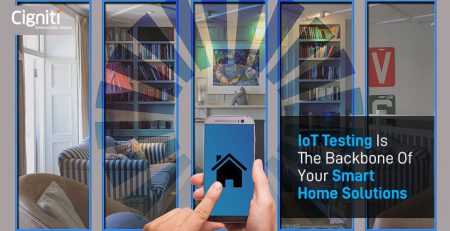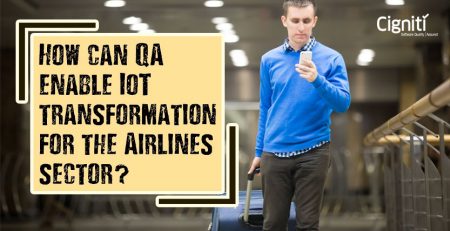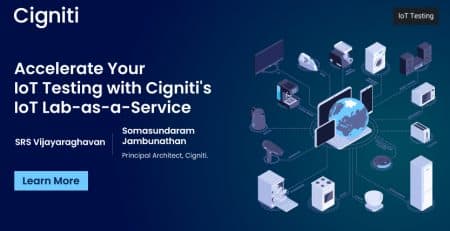Internet of Things (IoT) in a post-COVID world
COVID-19 has brought the whole world in the eye of the storm and the impact it has had on our society and economy is unprecedented. It has driven enterprises to rethink the way they operate and work.
According to McKinsey, “Before the COVID-19 outbreak, 92 percent of companies had been considering digital transformation of their business models, but the crisis actually revealed how vulnerable most companies are and how urgently they require transformation. COVID-19 crisis is likely to significantly accelerate the shift to digital and fundamentally shake up the business landscape.”
The effects of the pandemic on the global economic recession are causing CXO’s to prioritize spending on services and technology that are deemed “mission-critical” over initiatives aimed at transformation or growth. Investing in connected technologies is no more a luxury, but a necessity for survival and business continuity.
Need for resilient leadership in the face of COVID-19
It is imperative for enterprises to think ahead to be in a state of readiness to resolve the challenges due to the pandemic and protect the future of the business. As a business, there is no “one size fits all” solution to tackle this situation. Regardless of the extent of the virus impact on an enterprise, a typical crisis plays out over 3 phases –
- Phase 1 – Respond – in which an enterprise deals with the present situation and manages continuity.
- Phase 2 – Recuperate – during which an organization learns and emerges stronger.
- Phase 3 – Flourish – in which the company prepares for and shapes the “next normal”.
COVID-19 has precipitated enterprises entire focus towards industry 4.0. Two things that have become critical for enterprises today are focusing on adopting digital technologies that constitute the Industrial 4.0 revolution and investing in new products and services that enable them to thrive in the fast-evolving economic environment.
IoT is believed to be the crucial technology of the Industrial 4.0 revolution that has a future despite facing continuous challenges in the market.
According to Vodafone’s 2020 IoT spotlight research, “The Covid-19 pandemic has forced almost all businesses to change their working practices and priorities in a matter of weeks, with more than three-quarters of adopters increasing the pace of internet of things (IoT) projects.”
IoT is disrupting both the industrial sectors (agriculture, oil and gas, transportation, water, and manufacturing) and the consumer sectors such as retail, health care and services. These industries are adopting IoT with the increased use of sensors, cloud, robotics, centralized tracking, quality inspection etc., forming an ecosystem of smart manufacturing.
High value drivers of Internet of Things
Few of the compelling reasons why enterprises use IoT are –
- Cost Reduction: Enterprises have already started exploring more options to realize the potential of IoT by accessing untapped data and using analytics that can help operators make informed decisions in real time. With this increased efficiency, opportunities are created to reduce operational costs.
- Revenue Growth: Using data from interconnected systems, a customized offering can be created for end consumers to improve sales performance, reduce customer attrition, etc., leading to potential revenue boost.
- Security and Safety: Remote monitoring and control of critical assets supports operators in determining patterns and trends and reporting any abnormality. With the help of IoT, enterprises can realize their efforts to focus on ensuring a safe working environment and their employees wellbeing.
- Quality Control: Assessing process historical data from edge devices or sensors helps operators manage the product’s quality. Processing data at each stage has helped enterprises control quality and enabled operators to take corrective actions in real-time, rather than checking quality after batch production.
- Big Data: Generates humongous stats to analyze for understanding the needs and achieving customer satisfaction and assurance.
According to the latest IDC report, “Across the world, spending on software and hardware related to IoT is projected to grow rapidly, from $726 billion in 2019 to $1.1 trillion in 2023. The report further reveals that Asia-Pacific accounted for most of the spending on IoT in 2019, with India spending $20.6 billion.”
The rise of connected world is also expected to bring challenges around ensuring that privacy rights are respected while collecting and using data, the captured information is used and stored securely, and edge devices and sensors do not get hijacked or become a threat vector.
The IoT data life cycle considerations include data collection and discovery, data confidentiality/loss prevention, secure data retention and disposal, and compliance and regulatory requirements.
The IoT platform can intertwine nimbly across business sector platforms, raising security concerns pertaining to the collected information and effective management. The following are some observations per industry analysis:
- Weak authentication/authorizations
- Lack of comprehensive management
- Lack of notification
- Periodic security upgrades and increased threat vector
- Limited encryption capability
- Insecure web interface
- Use of default IoT parameters
- Data portability and interoperability issues with vendor lock-in
- Diverse nature of collected data
- Continuous availability
Privacy Challenges
IoT systems collect information that may be a personal or business secret. Implementations need to ensure better management of the following:
- Privacy by design
- Data subject rights
- Emerging privacy regulatory and compliance requirements.
Key considerations for privacy and protection in IoT
To counter the increasing threats in the IoT landscape, it is advisable for the IoT’s core development and architecture design to abide by a “secure-by-design” approach.
Processing large volumes of personal data may result in severe privacy implications which can be countered by adhering to stricter privacy considerations and data governance.
According to leading market estimates, “The IoT market is achieving new heights and will skyrocket to reach US$ 1256.1 billion by 2025 from US$ 690 billion in 2019 growing at a CAGR of 10.53%, during the forecasted period 2020-2025. With the development of wireless networking technologies, the emergence of advanced data analytics, a reduction in the cost of connected devices, the IoT market is expected to grow at a positive rate, even after the Covid-19 pandemic.”
Revenue opportunities driven by IoT
Enterprises realize the maximum benefits of connected operations when IoT shifts from being a cost to a revenue generator. Revenue opportunities are driven typically by various data monetization models such as:
- Data as a service: Relies on monetizing data captured in the system.
- Insights as a service: Relies on selling insights obtained by data captured in the platform.
- Platform as a service: Enables licensing the platform.
- Business as a service: Allows enterprises to provide a business capability as a service.
IoT as a technology has been maturing for some time and seems poised for continuous growth globally. This growth is expected to be driven by industrial sectors such as utilities, manufacturing, agriculture, and infrastructure, that are responding to massive changes in their operating environment.
To further accelerate the adoption, technology providers, policy makers, and industries need to work closely to address the challenges.
Cigniti’s experience in IoT app Testing as a Service (TaaS), a team of IoT-skilled assurance specialists, and a robust IoT assurance infrastructure (labs, simulators, test racks, etc.,) support real-time quality assurance of Big Data, Compatibility, IoT Security, Performance, Pilot, Regulatory, Reliability, Upgrade, Usability, and smart devices in a dynamic environment (RFID, Sensors).
Need help?
Talk to our IoT Assurance experts. They will help provide a solution to your business and will demonstrate how to overcome several IoT challenges in a post-COVID world.





Leave a Reply